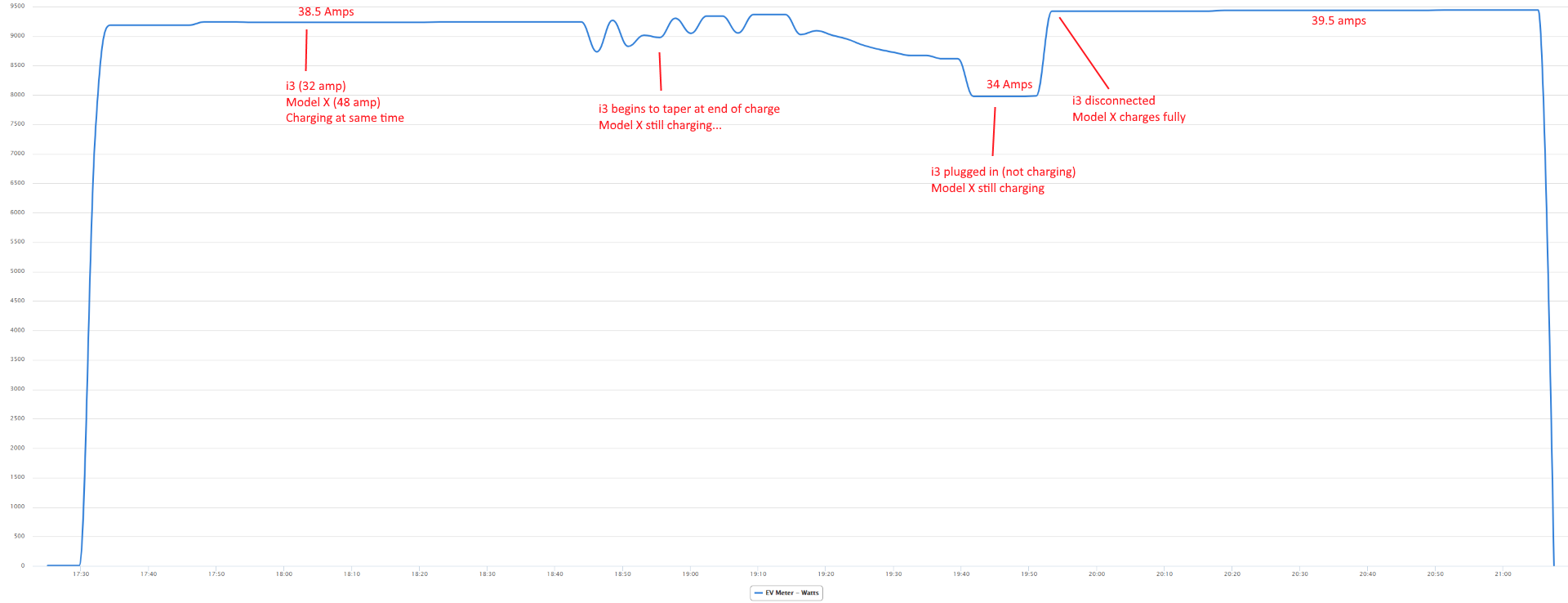robertvg
Extremely Well-Known Member
Not what I am seeing. I see 26A and 6A to the other car. The hpwc seems to measure the actual current going to each car
Even more interesting.
Wasn't the charging limited in the 330i at that moment ? (don't know the (im)possibilities of that car)
How would it decide to split the available Amps 26/6 for your Tesla and the 330i?
I can imagine it would distribute the power at a certain ratio between two Tesla's as theoretically these cars could communicate the SoC to the HPWC as @davewill claims above but afaik only Zoe's can communicate this (by iso15118)



